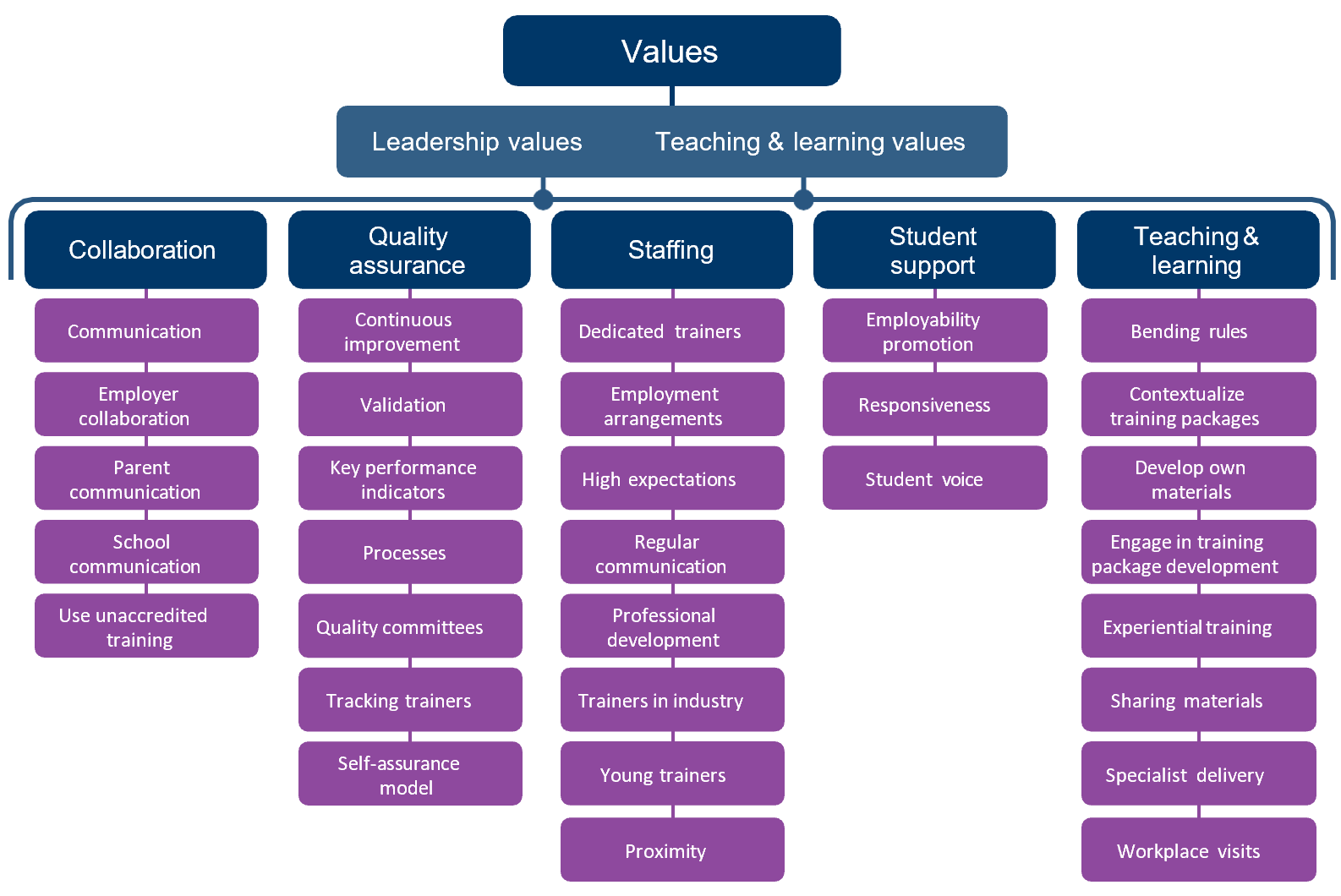This latest NCVER report, released on 6 July, aims to deliver a deeper insight into what drives RTOs to pursue excellence in student outcomes and in meeting community and industry skills needs. It drew insights from 21 RTOs from across all states and territories, with 15 of them being private providers.
First, it asks what motivates high-performing RTOs to deliver quality outcomes for students and industry? Second, it explores how those motivations are operationalised in RTO processes and functions. Judging what makes a high performing RTO is actually a ‘tough gig’, the report suggests. This is because of the complexity of the system and the multiple ‘measures’ and ‘insights’ that might contribute to judgements about an individual RTO’s performance.
Getting the balance right
From an RTO’s perspective getting the balance right, in essence, is about balancing its altruistic intentions with business motivations to ensure RTO viability and survival so that the RTO stays financial “while [also] providing the highest quality service.” RTO leaders talked of getting the right balance driving their motivations to deliver services and outcomes that went ‘above and beyond’.
There are a few other key things RTOs need to get right too: (1) “strong relationships with students and employers [are] vital to high performance” and (2) leadership style, particularly transformational leadership approaches, that appear to drive the way in which an RTO’s motivations are translated into action, and where “leaders prioritise inclusive and supportive practices for staff, students and employers alike.”
Indeed, and as the report also notes:
“Teaching and learning values [inform] the prioritisation of student support, excellent staffing, quality assurance activities and collaboration with stakeholders, although it was evident that it was the leadership style that determined the ultimate success of those activities.”
However, defining high performance needs to include not only measurable outcomes, such as completion rates, but also less tangible, but important measures, such as “evidence of established responsive student support, along with mechanisms for ensuring industry knowledge; for developing excellent trainers; and for dedicating resources for engagement with industry.” These are all critical to high performance and organisational success, according to the report.
Embedding high performance in RTO practices
The concept map from the report reproduced below attempts to summarise and highlight the approaches to embedding the pursuit of high performance in the RTOs studied. A number of themes emerged, “all of which were located under the overarching theme of values.” Each of these approaches is then described in the report (see pages 11 to 13).

What isn’t motivating for RTOs?
The clear message is that more regulation is not the answer to drive high performance and may indeed constrain an individual RTO’s ability to innovate, and maybe even be excellent. More ‘nuance’ is therefore needed to assure and improve performance, providers believe. Given the complexity of the sector and the range of RTO types with their associated mix of qualifications and student types the report argues that “it is unlikely that external assessments of RTO performance based on quantifiable measures will ever be viewed as satisfactory, comprehensive or fair.” Nevertheless, this is considered – and even attempted – from time to time by VET’s stakeholders and funders.
Speaking of that, funding levels and requirements can be another big turnoff, too. Finally, it notes that “a lack of support and resources for RTOs to extend themselves beyond meeting the standards of regulators: this included observations that VET is different from the higher education sector, in that VET is less willing to share resources or benchmark.” Maybe greater emphasis on performance and quality are needed with less attention to compliance?
This new report is a very good and worthwhile read and includes sections on how RTO performance can be measured and how RTOs can embed motivations into their operations, processes and functions. Many of the summary figures, such as the one included above, are really useful. The main report also accompanied by a support document, which includes additional insights and detail.








